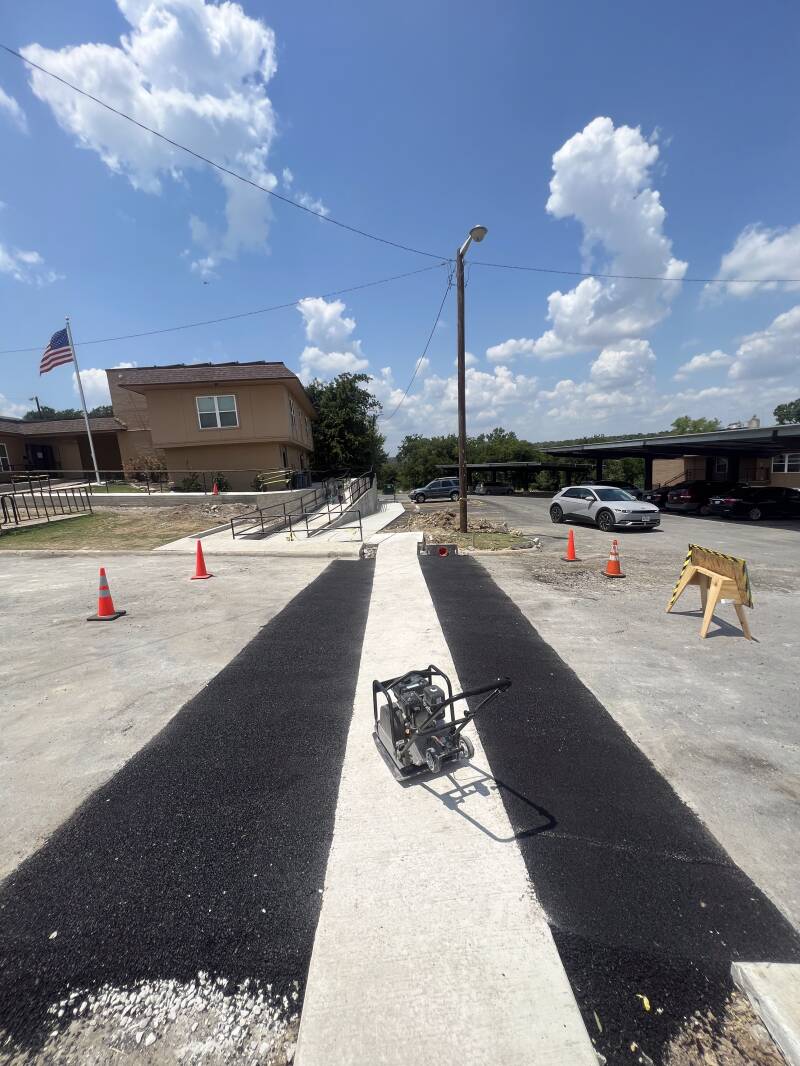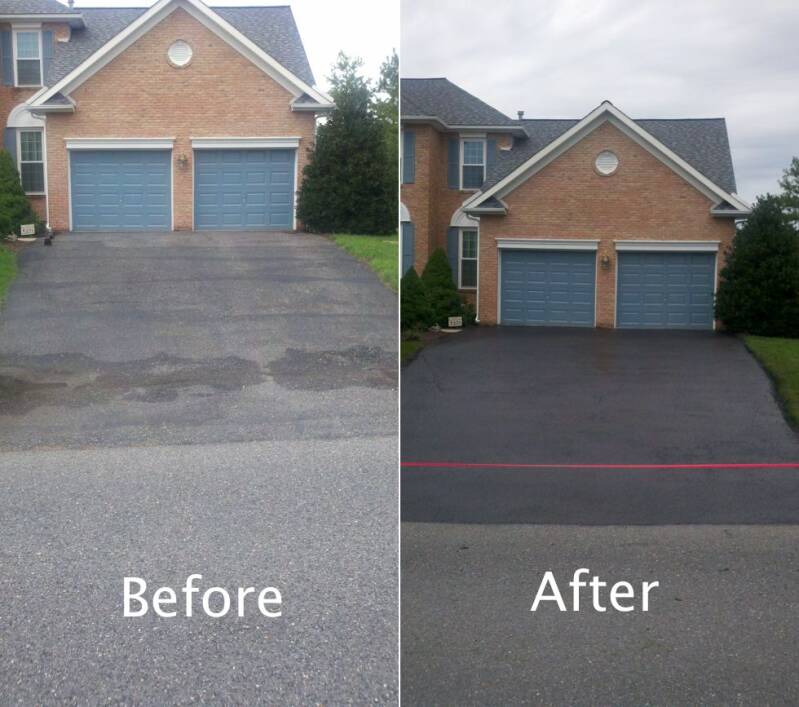Our Services
What we provide and the process...

How thick should I GO ?
The most common is 2-2.5" if they're heavier vehicles I recommend 3-4" . But remember asphalt flexes and moves, it's more malleable.
Asphalt Overlay New And Existing...
An asphalt overlay is when you simply have an existing base or asphalt surface, and you pave right over top of the asphalt. This is called an existing overlay because you didn’t take out the old asphalt. This is the easiest, fastest, and cheapest way to apply asphalt. When you don’t have anything but grass or dirt that’s what we call a new construction overlay. We then grade and add base rock to the area making a sturdy foundation, we then we overlay the base rock to get a brand new and fresh asphalt driveway or parking lot
Why an Area Might Need Repaving?
The condition of the sub-grade determines the condition of your paved surface. If the sub-grade is weak or damaged, your pavement will follow suit.
When you should opt for repaving over repairs:
-
You want to enhance the curb appeal of your home or business
- You want to fix drainage issues once and for all
- You want to make your property more valuable to potential buyers
- You want to maintain a safe and secure environment
The Paving Process
Take a look at our tried and true The Paving Process 9-step process:
After we do our walk through then we:
1. CLEAN THE EXISTING CONCRETE SURFACE THOROUGHLY
2. REPAIR ANY CRACKS OR DAMAGE IN THE EXISTING SURFACE
3. APPLY THE SS-1H TACK COAT BONDING AGENT TO ENSURE the molecular bond between new and old
4. SPREAD A LAYER OF HOT MIX ASPHALT EVENLY
5. COMPACT THE ASPHALT LAYER USING A ROLLER OR TAMP
6. ALLOW THE ASPHALT TO CURE AND HARDEN
7. SEAL THE ASPHALT FOR ADDED PROTECTION
8. ENSURE PROPER DRAINAGE FOR WATER RUNOFF
9. REGULARLY MAINTAIN AND REPAIR AS NEEDED
Crack Filling...
Asphalt surfaces inevitably succumb to wear and tear due to shifting soil, inclement weather, and invasive tree roots. Ignoring cracks that arise only makes the problem worse, leading to costly repairs and a shorter pavement lifespan. Incorporating crack filling into your maintenance routine helps repair existing cracks and prevent new ones from forming.
Crack Filling Process...
Prepare the Surface
We use a wire brush, a broom, or compressed air to remove debris from the surface.
Apply the Material
Hot pour crack filler is applied to the cracks. This material is heated to a high temperature to ensure proper flow and adhesion to the crack walls.
Finish & Cure
We smooth the crack filler with a squeegee to ensure it’s even with the surrounding pavement. The crack filler is then left to cure to ensure it has hardened properly and will provide a long-lasting seal.

Benefits of crack filling
- Prolonged Pavement Lifespan
- Elimination of Trip Hazards
- Enhanced Curb Appeal
- Increased Cost Savings
- Proper Drainage
- Moisture Damage Prevention
- Pothole Prevention
- Future Crack Prevention
Patching and Pothole Repairs...
Potholes are caused by a variety of factors such as rain, heat and traffic loading. Typically, traffic loading and natural forces erode the pavement, causing cracks to form. As the pavement continues to experience loading and continues to age, the cracks may grow deeper allowing for water to seep through the pavement. Eventually, the water makes its way into the subbase material which provides support to the pavement and then into the natural soil. When the temperature drops, the water freezes and expands, and pushes upward into the pavement. As the temperature rises, the base material returns to normal, creating a gap between the pavement and the supporting subbase material. As traffic drives over the weakened area, the pavement surface typically cracks and creates a pothole.




Don't let potholes drain your pockets!!
HOW TO REPAIR A POTHOLE OR PATCH...
1.) We start by cleaning the surface of the hole good with a blower
2.) then we mark off the pothole in a square. For the next step we need a saw cutting machine with a diamond blade and cut on the lines we just marked. When done cutting we then pick out the damaged and loose material.
3.) We then apply SS-1H tack coat bond agent to the entire hole and apply the hot mix to the hole evenly.
4.)Then drive the roller or tamp across the asphalt till smooth and even with the existing asphalt.
5.) After curing and cooling down we apply the sealer along the edges of the patch sealing it from the water.



SEALCOATING
What Is Sealcoating?
Sealcoating is the process of applying a protective layer over an asphalt road to safeguard it against damage from the elements, chemicals, and everyday wear and tear. This sealant mixture typically consists of bituminous or acrylic-based liquids, water, silica sand, polymer additives, and other fillers to create a high-quality formula. When applied regularly, seal coating can double the life of a driveway or parking lot.
How Frequently Is Sealcoating Required?
Schedule sealcoating services based on three factors: Typically 1.5-2 years
- The pavement’s age and condition
- day to day traffic and wear and tear
- Local climate and weather conditions



OUR VENDORS :
"We aren't in business to get rich, BUT being rich in the company we keep."
-Brett G
WE ACCEPT AS PAYMENT :

Ask us about our financing!!!
Everything you need to know about
Asphalt all in one place!!!!
Feel free to pause and read below!!!
(Click the arrow on the right to read the next card.)

